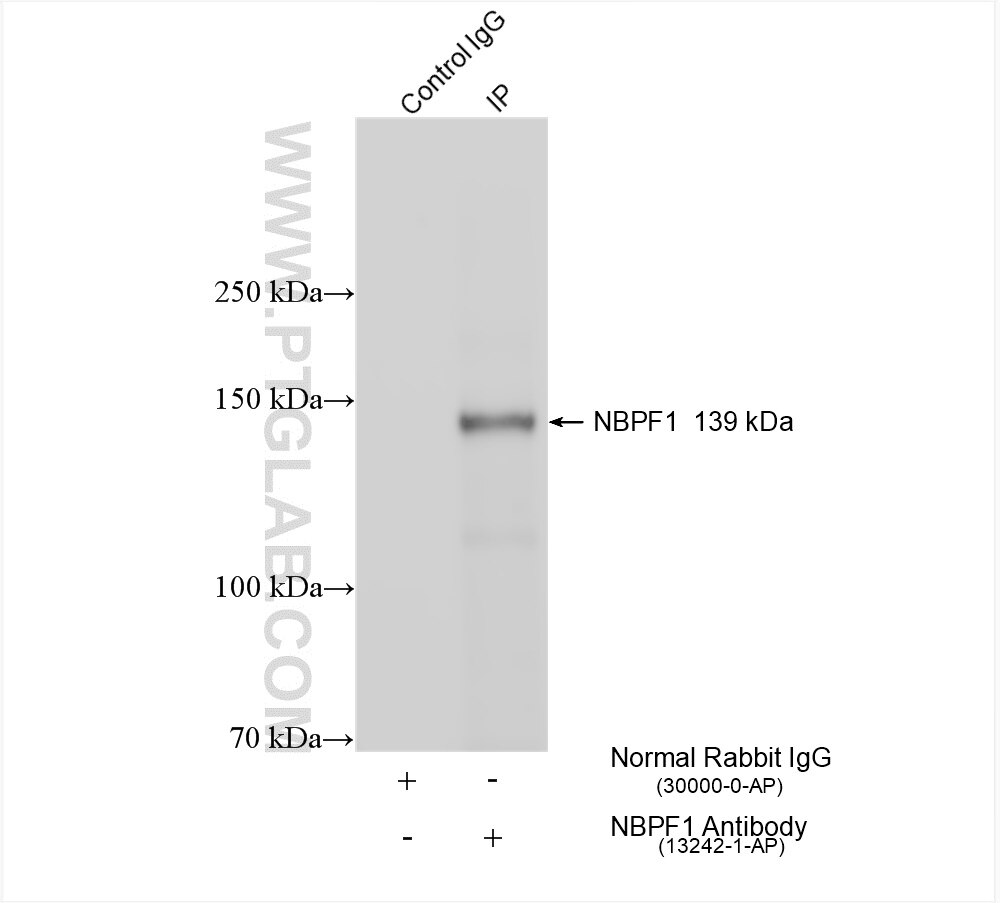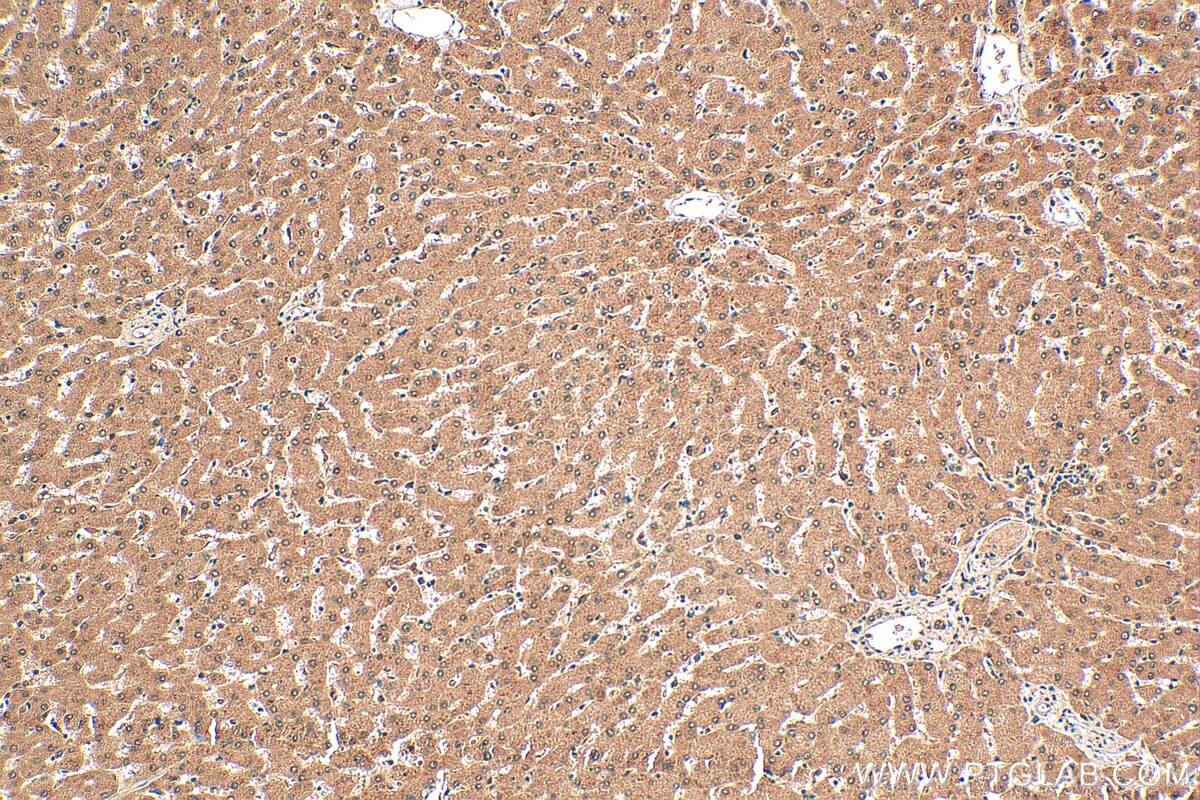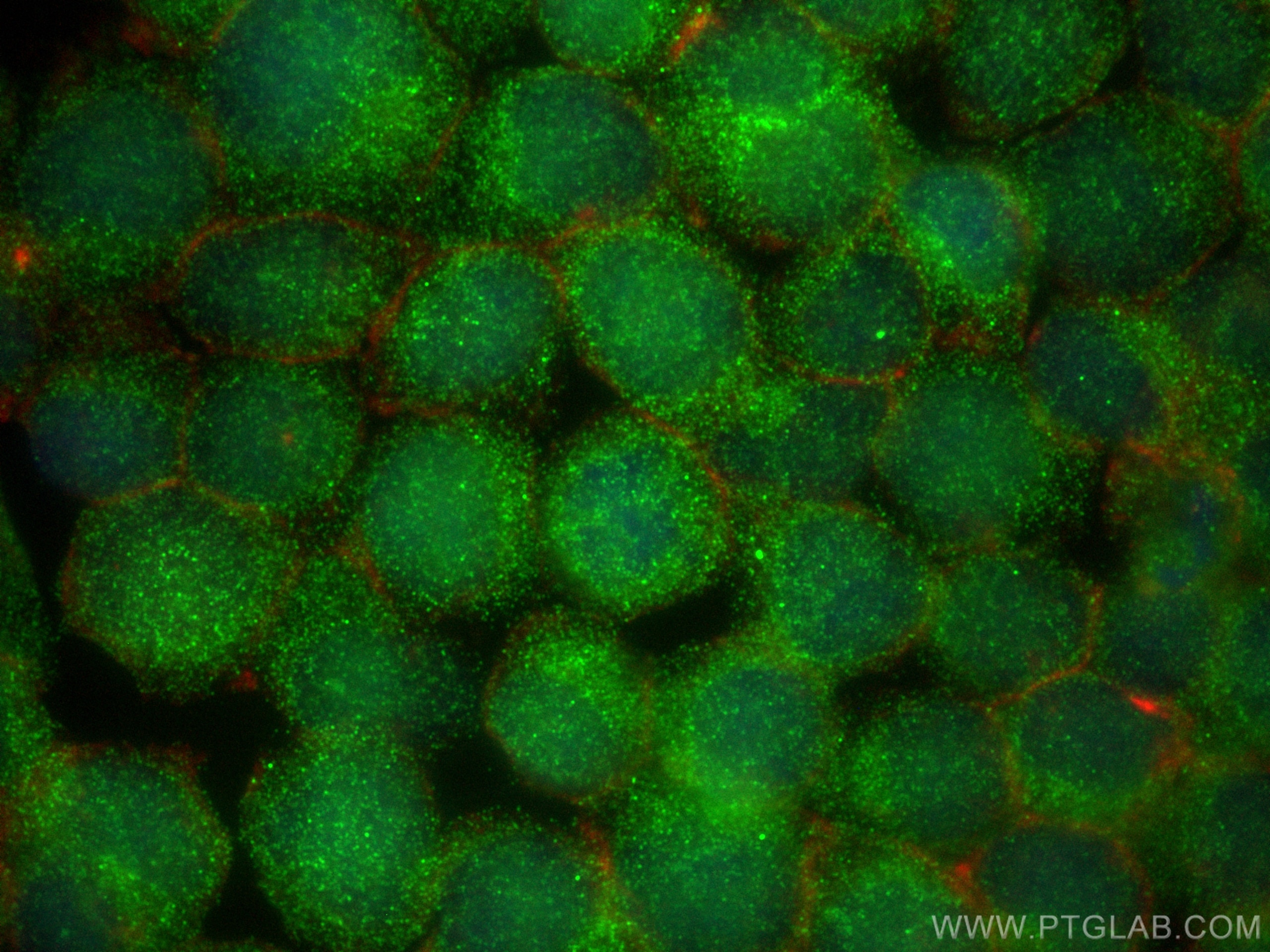Tested Applications
| Positive IP detected in | HeLa cells |
| Positive IHC detected in | human liver tissue Note: suggested antigen retrieval with TE buffer pH 9.0; (*) Alternatively, antigen retrieval may be performed with citrate buffer pH 6.0 |
| Positive IF/ICC detected in | Jurkat cells |
Recommended dilution
| Application | Dilution |
|---|---|
| Immunoprecipitation (IP) | IP : 0.5-4.0 ug for 1.0-3.0 mg of total protein lysate |
| Immunohistochemistry (IHC) | IHC : 1:50-1:500 |
| Immunofluorescence (IF)/ICC | IF/ICC : 1:50-1:500 |
| It is recommended that this reagent should be titrated in each testing system to obtain optimal results. | |
| Sample-dependent, Check data in validation data gallery. | |
Product Information
13242-1-AP targets NBPF1 in IHC, IF/ICC, IP, ELISA applications and shows reactivity with human samples.
| Tested Reactivity | human |
| Host / Isotype | Rabbit / IgG |
| Class | Polyclonal |
| Type | Antibody |
| Immunogen | NBPF1 fusion protein Ag4096 Predict reactive species |
| Full Name | neuroblastoma breakpoint family, member 1 |
| Calculated Molecular Weight | 1213 aa, 139 kDa |
| Observed Molecular Weight | 139 kDa |
| GenBank Accession Number | BC034418 |
| Gene Symbol | NBPF1 |
| Gene ID (NCBI) | 55672 |
| RRID | AB_3669156 |
| Conjugate | Unconjugated |
| Form | Liquid |
| Purification Method | Antigen affinity purification |
| UNIPROT ID | Q3BBV0 |
| Storage Buffer | PBS with 0.02% sodium azide and 50% glycerol, pH 7.3. |
| Storage Conditions | Store at -20°C. Stable for one year after shipment. Aliquoting is unnecessary for -20oC storage. 20ul sizes contain 0.1% BSA. |
Background Information
NBPF1 (Neuroblastoma Breakpoint Family, member 1) was originally identified in a neuroblastoma patient on the basis of its disruption by a chromosomal translocation t(1;17)
Protocols
| Product Specific Protocols | |
|---|---|
| IHC protocol for NBPF1 antibody 13242-1-AP | Download protocol |
| IF protocol for NBPF1 antibody 13242-1-AP | Download protocol |
| IP protocol for NBPF1 antibody 13242-1-AP | Download protocol |
| Standard Protocols | |
|---|---|
| Click here to view our Standard Protocols |







